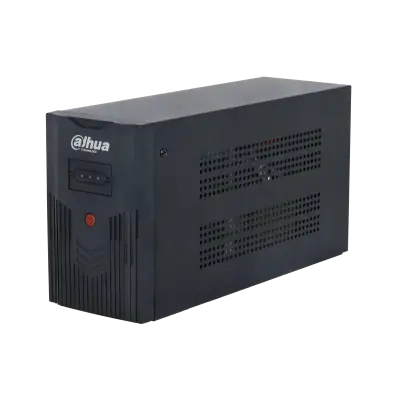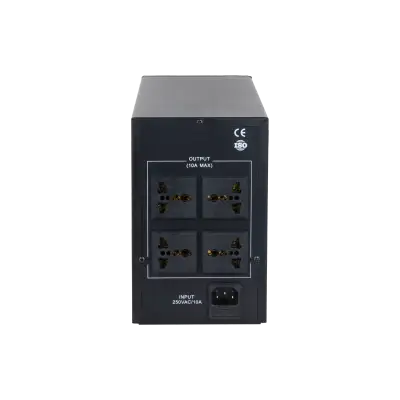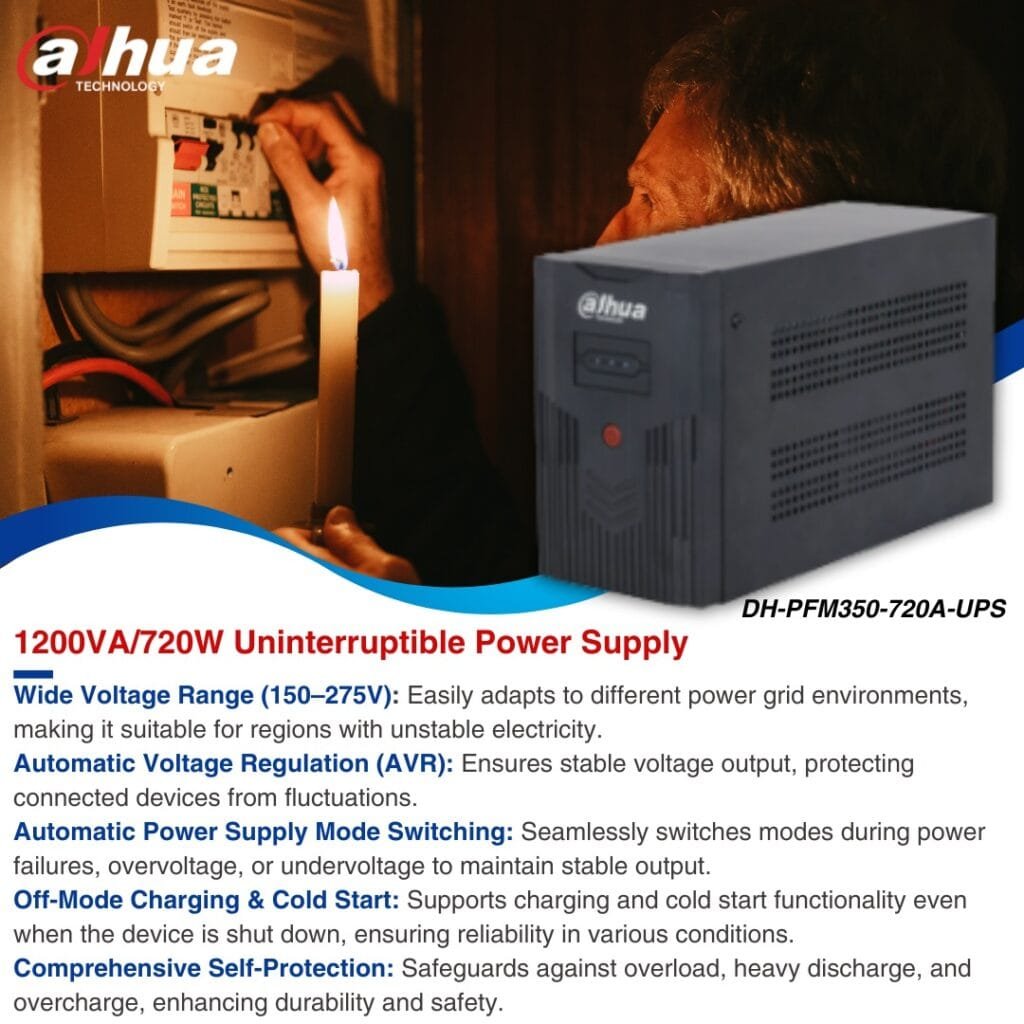
Power disruptions can be a real headache, especially when they damage equipment or cause data loss. That’s where Uninterruptible Power Supplies (UPS) come in! But did you know there are different types of UPS, each designed for specific needs? This UPS types comparison will help you understand the differences and choose the best one for your needs.
How It Works: This UPS stays idle when power is available and kicks in only during a blackout.
Switching Time: Takes 4–10 milliseconds (ms) to switch to battery power.
Voltage Stability: Very minimal.
Protection Against Surges: Basic.
Best For: Home users, small offices, and basic electronics.
Pros:
Budget-friendly and simple to use.
Energy-efficient when on mains power.
Cons:
A brief delay in switching to battery mode.
Limited protection against voltage changes.
📌 Example: The Dahua PFM350-360 is a 600VA/360W Line-Interactive UPS designed for small office and home use. It offers off-mode charging and cold start functions, ensuring reliable backup when you need it most.
How It Works: Uses an automatic voltage regulator (AVR) to correct minor voltage changes without using the battery. Only switches to battery mode when necessary.
Switching Time: Faster than offline UPS, around 2–4 ms.
Voltage Stability: Moderate.
Protection Against Surges: Better than offline UPS.
Best For: Small businesses, network equipment, and entry-level servers.
Pros:
Provides better voltage stability.
Longer battery lifespan since it doesn’t switch unnecessarily.
Cons:
Costs more than offline UPS.
Not ideal for areas with frequent severe power fluctuations.
📌 Example: The Dahua PFM350-900 is a 1500VA/900W Line-Interactive UPS with AVR, making it ideal for small businesses and network infrastructure. It ensures better voltage stability and reduces battery wear by regulating power fluctuations effectively.
How It Works: Continuously converts AC to DC and back to AC, ensuring zero power interruptions.
Switching Time: Zero milliseconds (0 ms) (always running, no delays!).
Voltage Stability: Excellent, keeps power steady at all times.
Protection Against Surges: High-level protection from power fluctuations.
Best For: Data centers, hospitals, financial institutions, and industrial applications where uninterrupted power is critical.
Pros:
No transfer delay, ensuring seamless operation.
Ultimate voltage stability and surge protection.
Cons:
Most expensive of the three types.
Consumes more power due to continuous operation.
📌 Example: The Dahua PFM351-900 is a 1000VA/900W Smart Online UPS, perfect for mission-critical applications like data centers and hospitals. With true double-conversion technology, it delivers stable and uninterrupted power.
| Feature | Offline (Normal) UPS | Line-Interactive UPS | Online (Double Conversion) UPS |
|---|---|---|---|
| Switching Time | 4–10 ms | 2–4 ms | 0 ms (Instant) |
| Voltage Stability | Minimal | Moderate (AVR) | Excellent (Full-time) |
| Surge Protection | Low | Moderate | High |
| Efficiency | High | Moderate | Lower due to double conversion |
| Cost | Low | Medium | High |
| Best For | Home use, small offices | Small businesses, network devices | Critical systems, data centers |
Picking the best UPS depends on your needs:
For basic home and office use, an Offline UPS is the most affordable option.
For locations with minor power fluctuations, a Line-Interactive UPS offers better stability and protection.
For businesses and critical operations, an Online UPS guarantees uninterrupted power and top-notch protection.
Dahua provides a range of reliable UPS Solutions designed to meet different needs, whether you’re looking for a budget-friendly backup or industrial-grade power protection.
Do you need help selecting the right UPS for your specific requirements? Feel Free to reach out.









